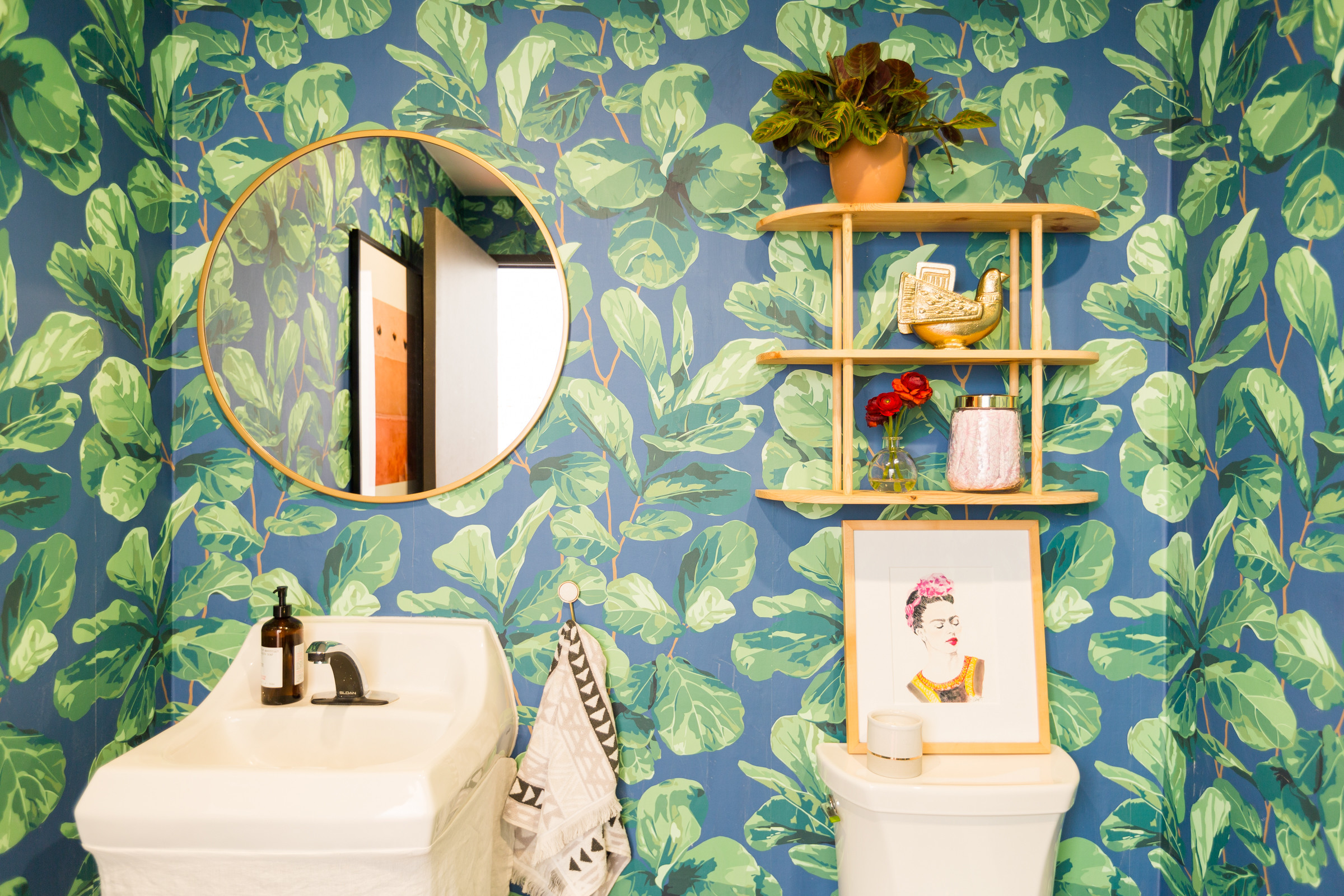Overlap and cut both pieces at once, Lower the middle of the overlap, Lap one panel over the other, and lower the middle of the overlap. Angle the knife blade down low so more than just the idea of the blade is doing the cutting. Often, instead of butting one panel up to another, you'll need to produce your own seam.
Bob chooses a 10-in. knife so he doesn't have to move it as often as he would a smaller sized one. Hold the knife down close to the wall to avoid cutting into the ceiling. Make relief cuts before cutting, Use a scissors for relief cuts, Utilize a scissors instead of a knife to prevent inadvertently cutting into wood trim and other barriers.

Project information Ability 3 out of 5 Moderate Not so bad for somebody with perseverance and accuracy, which are essential to hanging paper straight, plumb, and completely aligned. Wallpaper first appeared in the 16th century, in the kind of black-and-white hand-blocked prints, and it stays a preferred way to bring color, texture, and personality to a house.
A Biased View of Wallpaper Guide – Sian Zeng
According to John Dee, these are easier to work with than more fragile and tear-prone plain paper, and typically come pre-pasted, removing the requirement to roll on starch-based adhesives. They can, nevertheless, be more difficult to cut and require bonding with vinyl-to-vinyl adhesive. Tip: Silk, grass, fabric, and textured papers likewise require cautious attention during installation: "You absolutely can't get paste on their faces," Dee says.

Procedure the width and height of this wall and mark its midpoint. Mark the wall at the paper's leading edge, the edge versus which the next strip will hang.
To provide the adhesive an opportunity to trigger, carefully fold over both ends of the strip, bewaring not to crease the paper, so that they meet in the middle; this process is called "reservation." Make sure the paper's edges are precisely aligned so that no pasted surface area is exposed (vinyl wallcovering installers).
Ogden, Salt Lake City, Logan Painting Contractor, Wallpaper ... Things To Know Before You Get This
For pre-pasted paper, loosely roll up a strip with the adhesive side out and immerse it in a trough of cold to lukewarm water, depending upon the producer's directions, simply up until the paper is thoroughly wet (but no longer). Schedule the paper as above for 3 to 5 minutes. Step 4: Hang the First Strip Take the booked strip to the wall, then unfold and apply the top half, aligning one edge with the plumb line in Action 2.
Overlap a patterned paper as required so that the primary design element is centered on the midpoint of the wall section. Smooth the edges of the paper with a moist sponge, then brush lightly from the center of the strip to its edges. Next, carefully pull (do not push) a smoother across the paper to eliminate wrinkles and anchor the paper to the wall.
Measure, cut, and hang each subsequent strip, sliding them up or down on the wall to align the pattern and to butt seams tightly without any overlaps. Step 6: Wallpaper the Corners Corners are the only locations where strips overlap. For a within corner, step from the corner to the top, middle, and bottom of the last-pasted strip.
How Slaveholder And Holocaust Themed Installation Comes To ... can Save You Time, Stress, and Money.
Utilizing a level, trim a dry strip to that width, cutting the edge that'll meet the corner. Hang the paper so the just-cut edge turns the corner and extends onto the surrounding wall. Position the adjoining strip with its edge inside the corner, overlapping the previous strip; align the patterns.

Using the line as a guide, hang this strip. For outdoors corners, trim the strip to cover over the next wall by inch. Hang the next strip so it overlaps the previous piece but lands short of the corner. This prevents the paper from peeling if someone brushes versus the corner.
From the paper's waste edge to the corners of the trim, make diagonal cuts with scissors to allow the paper to lay flat on the wall. Get rid of the bulk of the overlap with scissors. Smooth the paper as in Action 4, then utilize the smoother to press the paper snugly against the housing, the ceiling, and the baseboard.
An Unbiased View of Wallpaper Guide – Sian Zeng
Step 8: Cut Around Window Apron To trim around a window's stool and apron, make a series of routes from the waste edge of the strip toward the corner where wall and stool fulfill. These narrow fingers of paper allow the strip to be formed to the profile of the casing.
Get step-by-step guidelines on how to hang embossed and basic wallpaper - wallpaper installers near me.
• click here nowanchorclick for more info